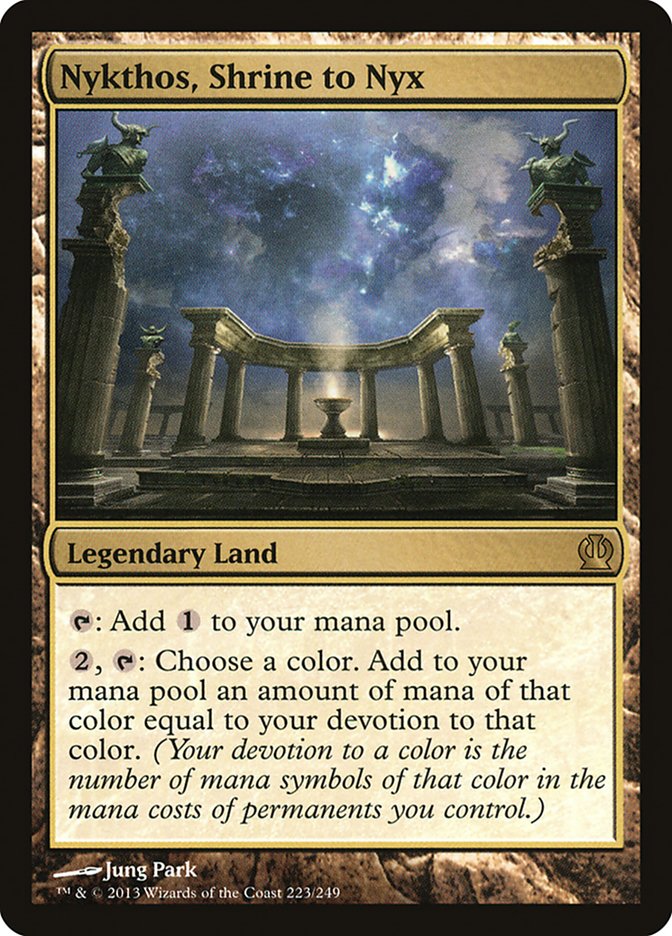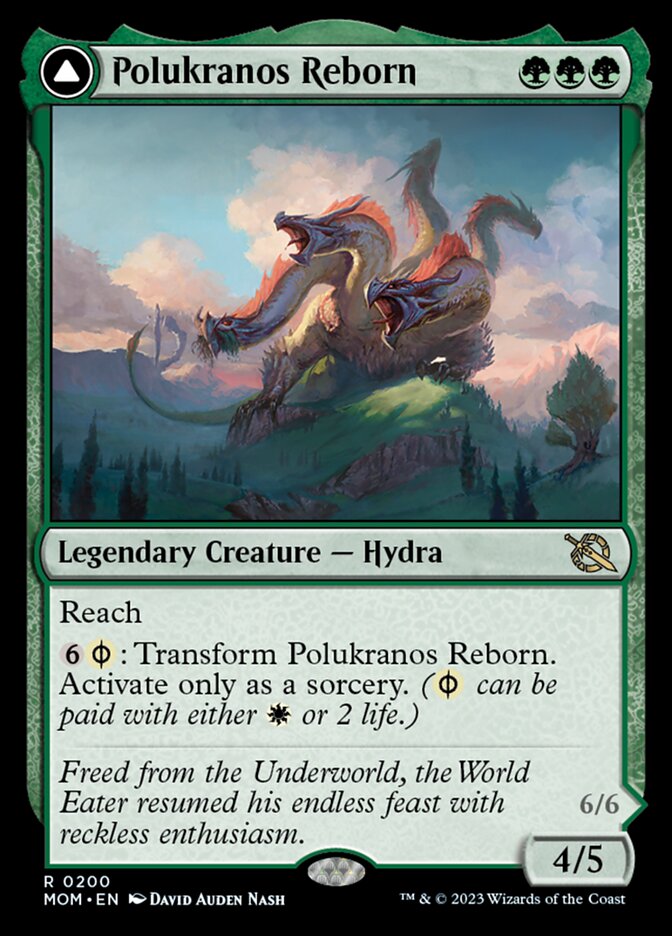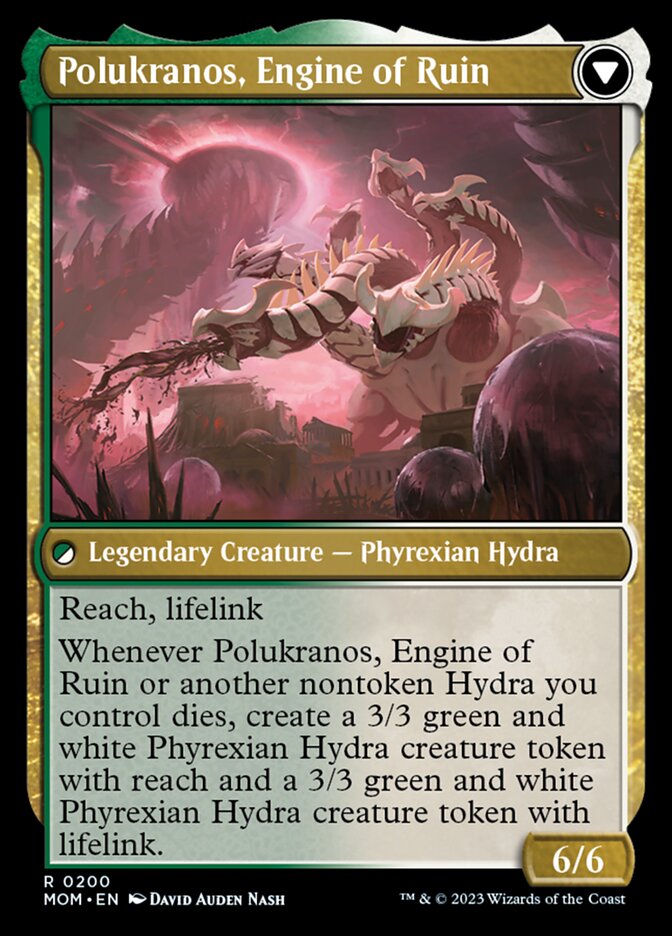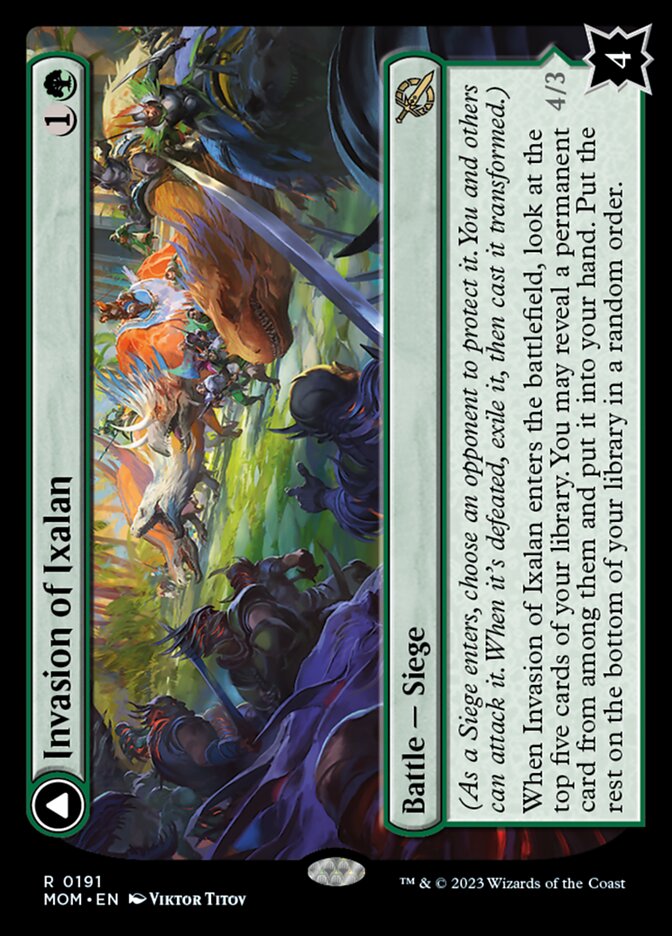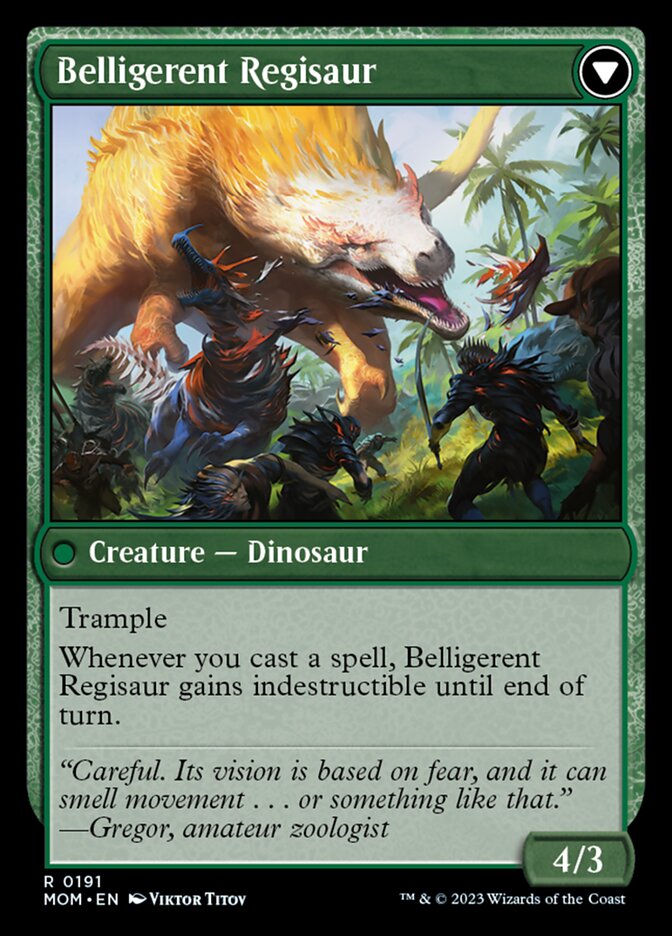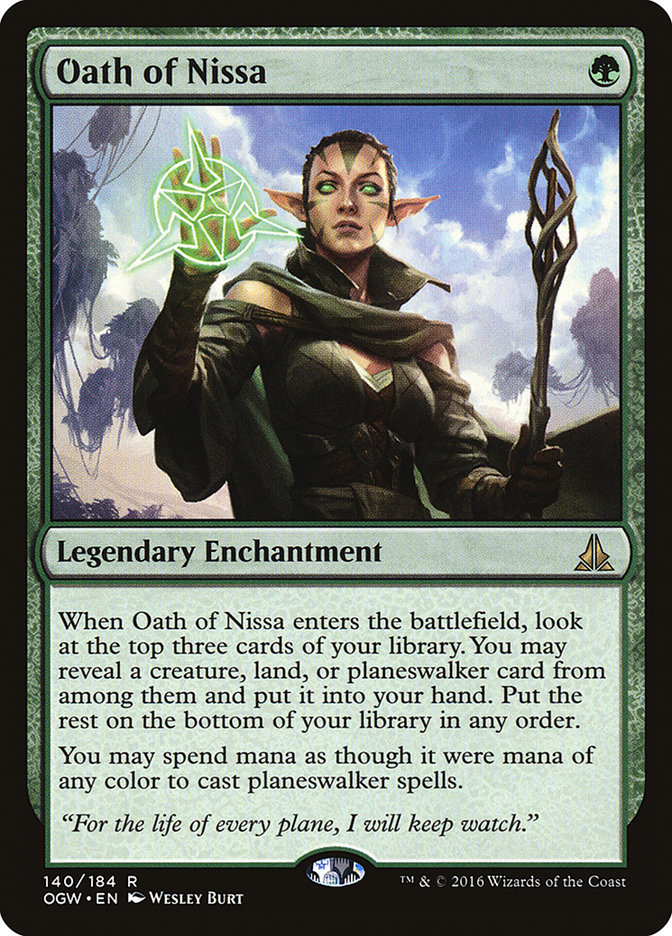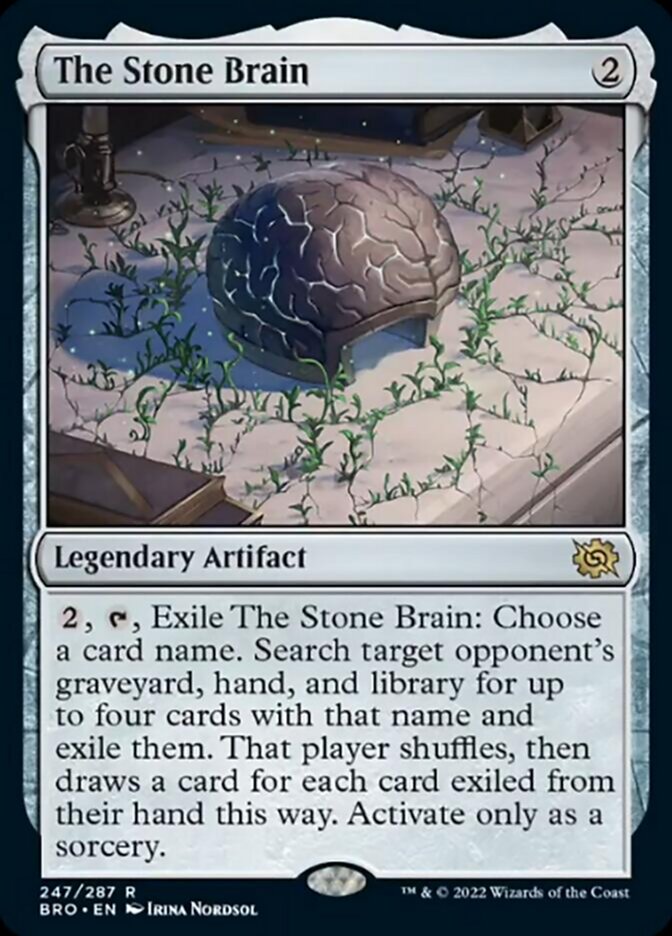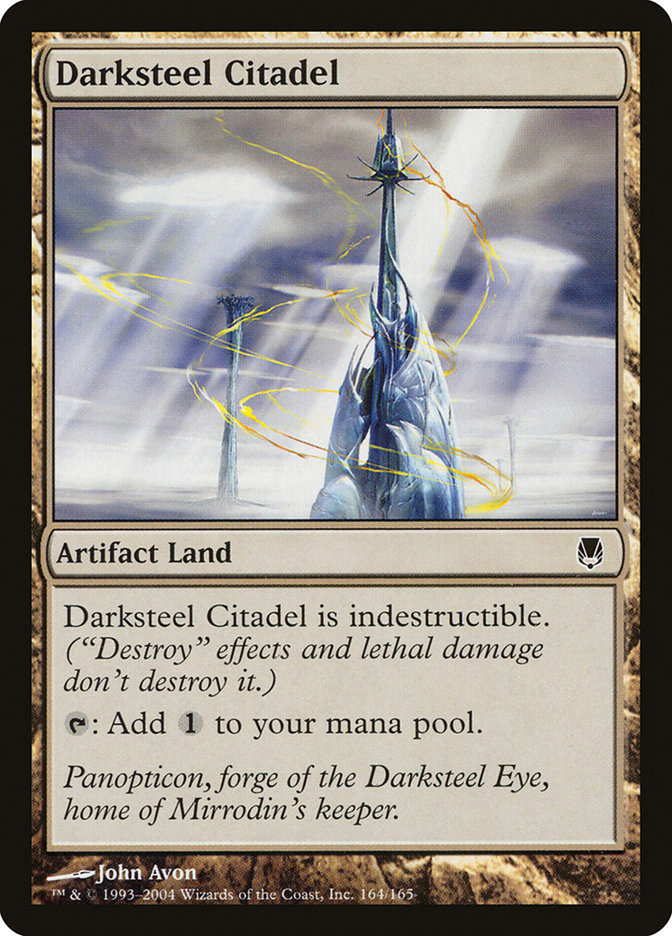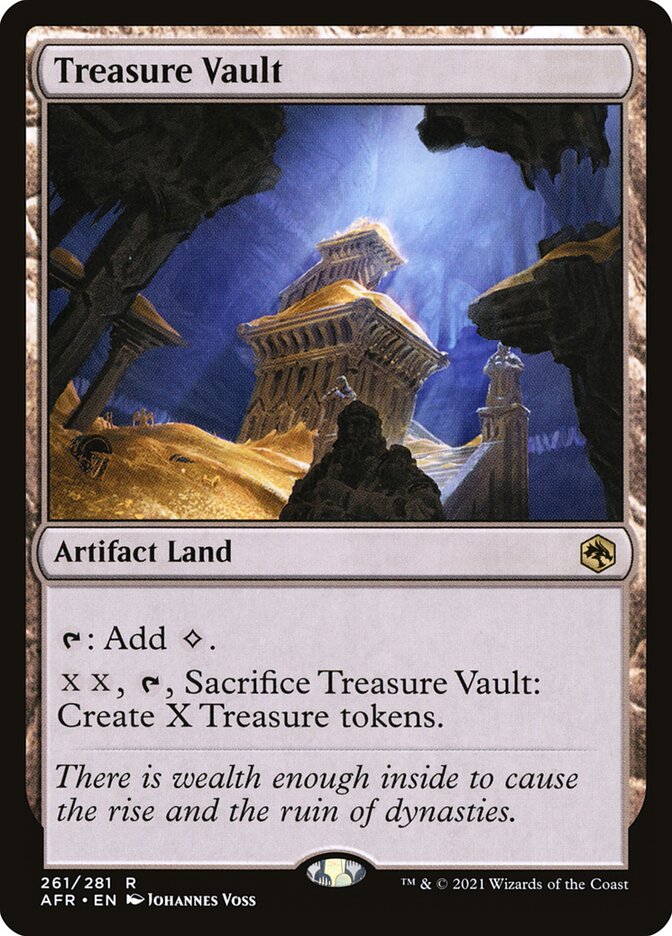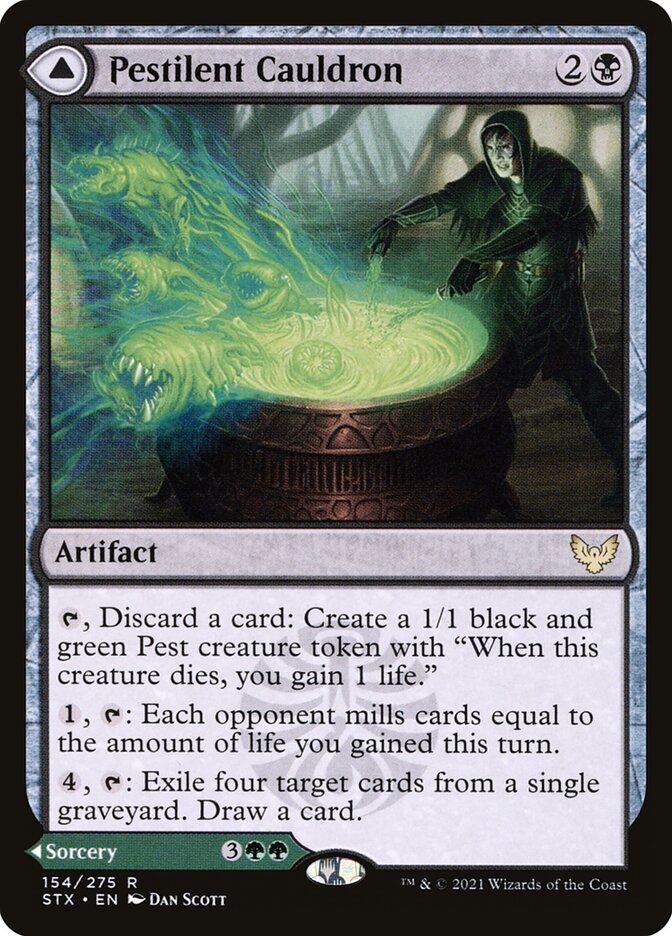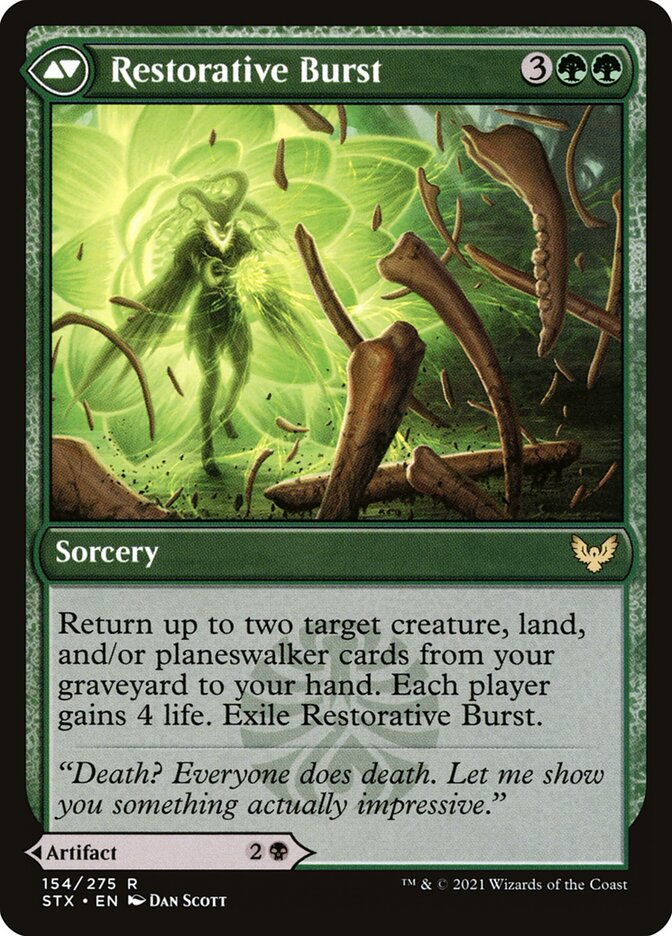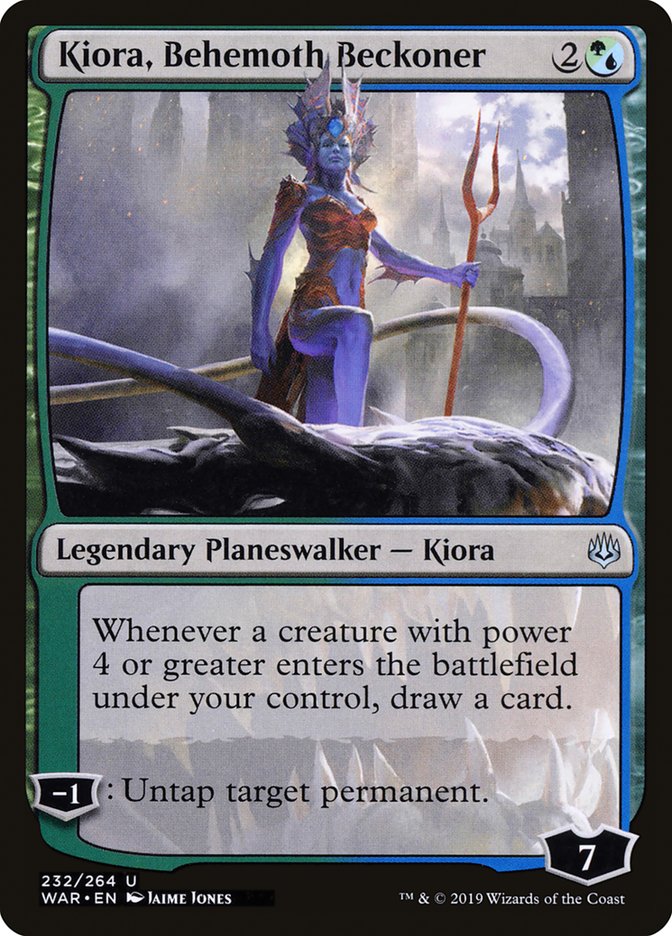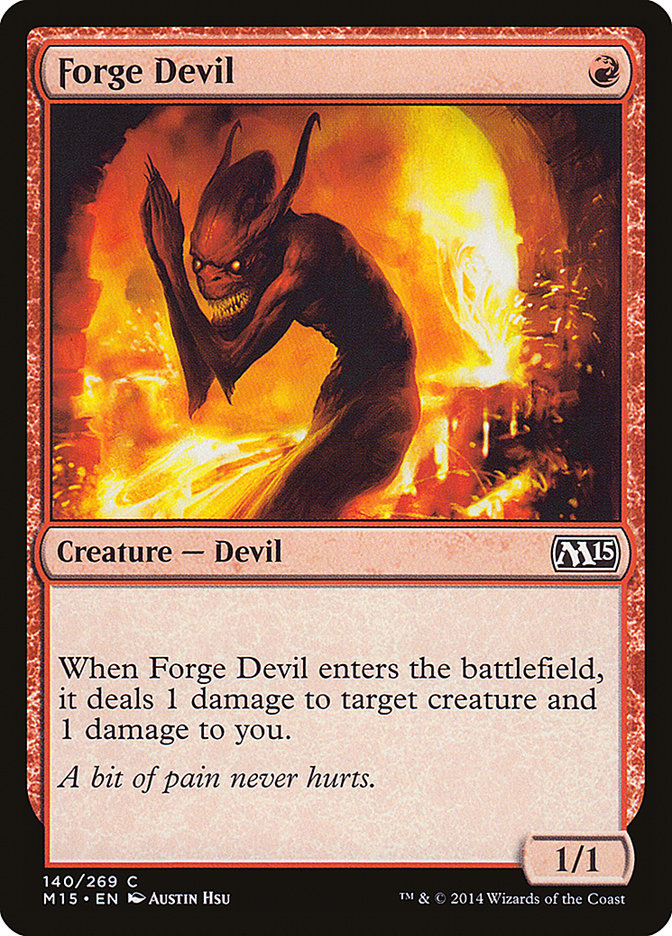Fine tuning Mono-green in Pioneer: In-depth & Sideboard guide
Why Mono-green?
While delving deep into Rakdos Midrange , I gained significant respect for Mono-Green Devotion in the Pioneer format. I found myself dedicating numerous sideboard slots to this matchup and even including main deck cards specifically for it. Yet the game still remained somewhat balanced despite these extensive efforts.
My struggle lay in trying to understand why I was having such a hard time against what seemed to be a simple ramp deck
My struggle lay in trying to understand why I was having such a hard time against what seemed to be a simple ramp deck. Here was my misconception: it's not just a ramp deck. Mono-Green Devotion functions as a midrange-combo deck, and at times, even takes on the role of a prison deck.

Typically, such versatility is balanced by a lower power level. However, that's not the case here, we have both versatility and power level but at the expense of most of our sideboard slots.
Therefore, I pursued the aim of fine-tuning the sideboard of Mono-Green to get a better ability to sideboard well. Acknowledging Mono-Green to be a midrange-combo deck played a big part in my motivation to work on this archetype. Midrange-combo is a potent threat. Integrating a combo within a deck is incredibly powerful but often comes with the drawback of having cards that don't hold their own in isolation. That's where the beauty of a midrange-combo lies. It's all about using cards that are strong on their own and can hold their ground in a fair game while being capable of constructing a combo for a kill shot.
Learning how to play mono-green
I'm not the most disciplined student. Learning processes that demand intense, sustained efforts often pose a challenge for me, and I need the journey to remain enjoyable throughout. This means my learning curve with combo decks can be quite steep, as I seldom maintain the motivation to put in the effort to thoroughly study the manual.
I discovered that many games don’t even involve the combo at all, and even when they do, you're often comfortable with mana since Nykthos provides you with plenty of it.
You can even largely bypass the combo steps and simply play your sideboard through Karn/The Chain Veil, which seems to work quite well.

After playing a few leagues and cultivating a fondness and respect for the archetype, I finally opened the manual to learn how to deftly execute the combo, managing to pull it off with just the right amount of mana. I was thrilled that my efforts had paid off, but I would never have reached this point if I had started out by trying to learn from the manual.
Everyone is different, and while the standard approach may work for some, it suits me better to start with the dessert, so to speak. I don't believe this poses a problem regarding optimization of preparation. What's important is to continue progressing and learning. Before the tournament, every win or loss is just a piece of data; it's only within the tournament itself that victory truly counts.
The release of March of the Machines
Mono-Green was somewhat incomplete until the release of MOM. The archetype was missing a few maindeck slots, which were filled with whatever tools were available at the time. However, MOM introduced two new cards that have now thoroughly rounded out the Mono-Green deck.
Polukranos is a standout card. As a GGG three-drop, it ensures a consistent 1-3 curve and enables us to build devotion early in the game. Yet, it's more than just that; it doubles as a second reach creature, which is crucial in the Greasefang match-up. It's somewhat helpful - though not sufficient - against spirits, and its backside furthers our midrange game plan.
However, its legendary status poses a challenge. The debate about the number of legendary curve cards usually centers on having three or four, trying to balance maximizing drawing one against the risk of drawing two. It's slightly different with Mono-Green because we're running Storm the Festivals, and building devotion through those sorceries is essential. Moreover, Polukranos is somewhat vulnerable, in contrast to the Troll, which means we often avoid blocking with it (like in the case of the Bloodtithe Harvester, fearing a Stomp), and it tends to remain on the battlefield, making a second copy redundant.
Considering these factors, I settled on including two and could see the potential for a third
Considering these factors, I settled on including two and could see the potential for a third in a heavily Greasefang / Spirit metagame. However, given the vastness of the pioneer format, I highly doubt this situation will arise.
Another card I'm particularly fond of is Invasion of Ixalan. There are two primary reasons for this. First, certain match-ups tend to capitulate to Karn, and your sole strategy is to resolve the card as quickly as possible. In this case, having more cantrips to locate the card proves to be beneficial. Second, the flip side of Invasion has an even mana cost, which provides some resilience to Extinction Event. The fact that the creature has 4 power also triggers Kiora, which is useful in the more exchange-heavy match-ups in the post-sideboard stage.
I also discovered that the fourth Oath of Nissa can cause issues due to the same legendary considerations as Polukranos, in relation to Storm the Festival. I tend to avoid investing mana or value into cards that don't contribute to building devotion. For this reason, I replaced the fourth Oath of Nissa with a second copy of Invasion of Ixalan.
Fine-Tuning the Sideboard
Sideboard-able Cards VS Silver Bullets
The sideboard for Mono-Green is mostly composed of 'silver bullet' cards for Karn that happen to be sideboard-worthy when you lack the tempo to fetch them with the planeswalker, or when you're attempting to introduce them as a fifth or sixth copy of Karn. Fine-tuning this was a substantial challenge because I had to strike a balance between Silver Bullets and potential sideboarding options.
Choosing among different sideboard-able cards is straightforward, as you can weigh the popularity of the match-ups where these cards are introduced against the power of the sideboard cards. Similarly, selecting among different silver bullets is uncomplicated because you can theorize about which scenarios are most likely to occur.
However, finding the right balance between sideboard-able cards and silver bullets that can also be sideboard-able presented a substantial challenge.
I addressed this by aggressively removing cards from my silver bullets. The instances of needing Woodcaller Automaton and Transmogrifying Wand were so infrequent that I preferred having a sideboard-able card instead.

This decision freed up two slots, and what to fill these slots with is heavily dependent on the current metagame. Given the vast scope of the pioneer format, I opted for the card that could be brought into play most frequently, and that is Stone Brain.
There are certain matchups where your role is more defensive, similar to a prison. In such scenarios, locating Karn is crucial to execute this strategy, and you will highly prioritize finding this planeswalker during your mulligans and cantrips. However, as there are only four of them in the deck, having a virtual 5th and 6th copy through Stone Brain significantly enhances your chances of finding it swiftly. I will delve into the specifics of these matchups later in the article.
Darksteel Citadel vs. Treasure Vault
The choice between Darksteel Citadel and Treasure Vault is often resolved based on whether you're playing in person or on Magic Online.
In the given text, there are two Magic the Gathering Cards mentioned: Darksteel Citadel and Treasure Vault.
The Stone Brain loop is easy to execute in tabletop play because you can simply name the loop. However, you must perform the loop in its entirety on Magic Online, and the time constraint can be prohibitive. Having a Treasure Vault in the sideboard provides us with a source of black mana to cast the front side of Pestilent Cauldron, which can mill our opponent to death.
But delving deeper into this, having a land in the sideboard to fetch with Karn can be very helpful when we need to secure our land drops. After playing with both cards, I've found that Darksteel Citadel's indestructibility is a feature that rarely matters, while we do sometimes sacrifice a Treasure Vault to gain a mana boost at a crucial point, for example, to cast a Cityscape Leveler.
Treasure Vault is not a highly dependable source of black mana when we're attempting to combo off, as you will most likely have already used your land drop for the turn to reach such a position. There are many cards we can play to address this issue - Reckoner Bankbuster being one of them - but I've found that merely casting our entire sideboard along with some Stone Brain can be sufficient to secure a victory, thereby freeing up a sideboard slot.
Treasure Vault serves as a source of black mana which is nice, but even if it didn't, I simply prefer it as a land over Darksteel Citadel.
The combo manual 101
I won't delve too deeply into this topic, as it would warrant an entire article in its own right. For those new to the archetype, I aim to share some basic understandings here. Veterans of the mono-green deck may not find anything new in this section. For pedagogical clarity, I will omit certain details, meaning that some of my assertions may have corner-case counterarguments. However, I believe it's more beneficial to begin with a solid foundation before diving into intricate details.
What I refer to as "the combo" takes advantage of the fact that Pestilent Cauldron exiles itself when cast for Restorative Burst.

Consequently, we can fetch it again with Karn. This becomes a loop once we have a second Karn. Yet, we need mana to achieve all that and Restorative Burst can retrieve up to two cards from our graveyard, and we use the other target to Kiora to get it.
Thanks to Nykthos, she provides us with all the mana we need, assuming we have at least 14 devotion. This number is key because the cost of Karn (4) plus Restorative Burst (5) plus Kiora (3) plus a Nykthos activation (2) equals 14.
We need two Kioras to legend rule them each time and get them back infinitely with Burst plus Karn. Each Restorative Burst loop grants every player 4 life, and we can finish off with a standalone Pestilent Cauldron cast to mill each player for infinite cards.
Adding The Chain Veil to the Mix
I mentioned that we could play "all of our sideboard," which is achievable with The Chain Veil. Using Karn to fetch The Chain Veil grants another activation of Karn, allowing our Kioras to generate more mana and even untap The Veil for another activation. The trick here is that every Veil activation also applies to future planeswalkers that enter the battlefield during that turn. In this state, each Kiora generates more mana, each Karn fetches more sideboard cards, and after this snowball effect, we can cast as many cards from our sideboard as we wish.
In real life, we could simply use Stone Brain to defeat our opponent, but this is too time-consuming on Magic Online. So usually, a Cityscape Leveler, some Stone Brains, and a Skysovereign will seal the deal.
We could delve deeper and find some combo kills with less than 14 devotion if we have some mana floating to activate The Chain Veil first, but as I said, I won't delve too deeply into this topic.
The list I am playing

| Creature [18] | ||
|---|---|---|
| 4 Elvish Mystic | $0.99 | |
| 4 Cavalier of Thorns | $1.49 | |
| 4 Old-Growth Troll | $0.79 | |
| 4 Llanowar Elves | $0.69 | |
| 2 Polukranos Reborn | $0.49 | |
| Sorcery [4] | ||
|---|---|---|
| 4 Storm the Festival | $0.49 | |
| Enchantment [7] | ||
|---|---|---|
| 3 Oath of Nissa | $1.79 | |
| 4 Wolfwillow Haven | $0.39 | |
| Battle [2] | ||
|---|---|---|
| 2 Invasion of Ixalan | $0.59 | |
| Planeswalker [8] | ||
|---|---|---|
| 4 Kiora, Behemoth Beckoner | $0.99 | |
| 4 Karn, the Great Creator | $7.49 | |
| Land [21] | ||
|---|---|---|
| 13 Forest | $0.01 | |
| 4 Nykthos, Shrine to Nyx | $39.99 | |
| 2 Lair of the Hydra | $1.99 | |
| 2 Boseiju, Who Endures | $49.99 | |
| Sideboard [15] | ||
|---|---|---|
| 1 The Chain Veil | $4.49 | |
| 1 Damping Sphere | $0.79 | |
| 1 Tormod's Crypt | $0.59 | |
| 1 Pestilent Cauldron | $0.49 | |
| 1 Pithing Needle | $0.59 | |
| 1 The Mightstone and Weakstone | $5.49 | |
| 1 Skysovereign, Consul Flagship | $1.99 | |
| 1 Cityscape Leveler | $14.99 | |
| 1 The Filigree Sylex | $0.49 | |
| 1 Haywire Mite | $3.49 | |
| 1 Esika's Chariot | $4.49 | |
| 3 The Stone Brain | $1.99 | |
| 1 Treasure Vault | $2.49 | |
 $70.64 Tix @cardhoarder
$70.64 Tix @cardhoarder
 $1.77 / Week @cardhoarder
$1.77 / Week @cardhoarder
 $298.64 @tcgplayer
$298.64 @tcgplayer
 $371.21 @cardkingdom
$371.21 @cardkingdom
Sideboard Guide
Mono-White Humans
- No changes -
Most games center around Humans striving to suppress Mono-Green, applying maximum pressure to close the window before too many creatures stabilize the board and eventually trigger a combo.
In such a development race, playing a Llanowar elf on the first turn is a crucial element of Mono-Green's ability to deploy their tools. Therefore, I will mulligan every 7-card hand that lacks a Llanowar on the draw, and be very demanding when considering hands without an elf on the play. A turn one elf, followed by the spending of those three manas, is often enough to outpace Humans for the remainder of the game.
You often lose this race for development. While some of your wins may be uncontested because you are too quick with your elves, there are also games that ebb and flow. It's important to note that Mono-White Humans actually holds inevitability through Brave the Elements - a concept I discussed in my last article . This suggests that once we've stabilized, we aim to execute a combo as swiftly as possible. If we're unable to do so, we need to calculate whether a Brave would be lethal, or even a sequence of Brave + Thalia's Lieutenant. If that's the case, we should try to push for damage, facilitate some trades, and reduce their board presence so that a Brave would not be lethal.
Lair of the Hydra is a fantastic tool for achieving this, as it enables us to inflict substantial damage thanks to Nykthos, without the need to attack with a large number of creatures. Another strategy can be attempting to flip our Invasion of Ixalan. If we attack with a 4-power creature, we either generate a new blocker for our attacker, creating a more substantial board presence without reducing our number of blockers, or we get to trade with one of our opponent's creatures, which slows down their inevitable progress.
Rakdos Midrange
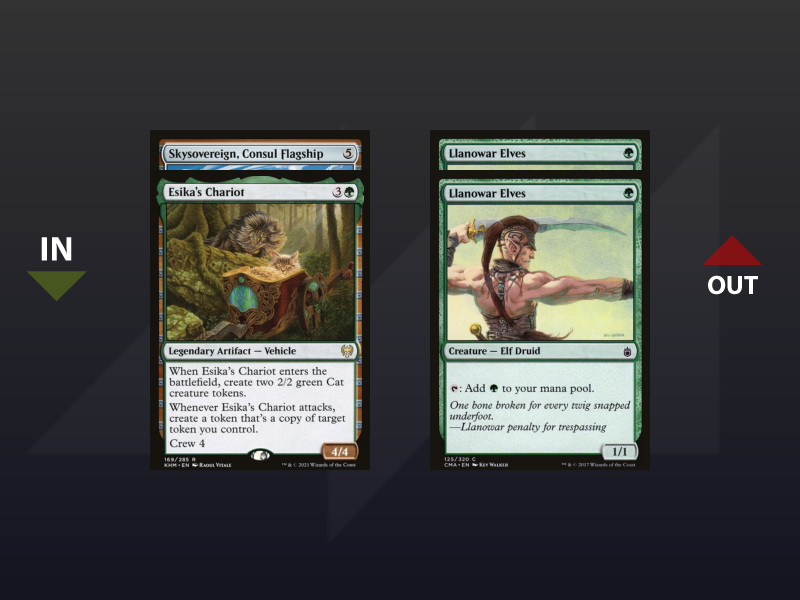
In this match-up, Mono-Green holds the advantage of inevitability, while Rakdos needs to act quickly to clinch the game. Most games tend to heavily favor one side or the other. Rakdos aims to disrupt your mana development by destroying your elves and discarding your havens, but if this strategy falls short, Mono-Green becomes notably resilient due to its flashback cards and its potent ability to topdeck impactful cards.
As Mono-Green, your strategy should focus on stabilizing the board with devotion creatures until you reach a tipping point. Achieving victory through your creatures' beatdown is an uncommon outcome, so a stalemate proves particularly beneficial for us.
Post-sideboard, the dynamics shift as Rakdos gains access to Extinction Event, which primarily functions as a one-sided wrath effect. To gain some form of protection to this, I sideboard out some Llanowar Elves and introduce standalone cards that offer resistance to this effect. These two cards have the potential to single-handedly win games when played on curve, but they don't exhibit as much strength when fetched with Karn.
Azorius Control
- No changes -
Interestingly, Azorius Control tends to be a favorable match-up. Expensive sorceries often fall short against counterspells, but the Azorius Control's pace is rather slow, especially if we consistently present cards that they must counter each turn, thus preventing them from casting Memory Deluge.
My strategy in this match-up is to prioritize resolving cards over playing the most impactful ones. This means that I aim to work around Veto, Make Disappear, and Censor as much as I can, even if it means "losing" mana each turn. This approach may result in slow board progression, but Nykthos ensures that this gradual advancement pays off.
The dynamics remain the same even after sideboarding. Azorius brings in more counterspells, which doesn't change the dynamic.
Lotus Field
On the Play
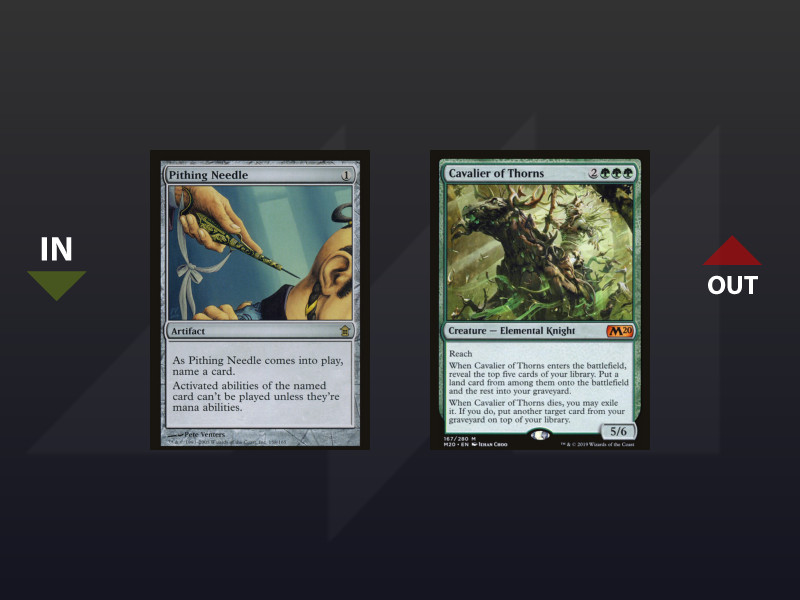
On the Draw

Both decks have a combo strategy, so part of the matchup often comes down to a race. Mono-Green and Lotus Field are comparably fast, and whether you're playing first or second dramatically changes your approach to this matchup. Lotus Field typically goes off on turn 5, with Lotus on turn 3, Stage on turn 4, and a combo kill on turn 5. If you're playing first, you can compete with this pace and stick to a combo strategy, but if you're second, you'd need to trigger your loops by turn 4, which requires an excellent draw.
When playing first, I only side-in a single Pithing Needle as it fits smoothly into the curve. Naming Thespian’s Stage can significantly hinder Lotus, as they'll need to deal with this artifact first. You could apply the same logic to Stone Brain, but since we're racing with a combo when playing first, it's better to have more cards that build devotion. Also, investing 4 mana into Stone Brain consumes your entire turn, while using 1 mana for Needle allows for additional plays.
On the other hand, playing second changes things drastically. Sure, we have a sideboard plan that is quite similar but we have so much agency with mulligan and cantrips that changing our way to play has a big impact. The thing is, you can't really race Lotus on the draw and must adopt a more defensive, prison-style strategy, defeating opponents with whatever creatures you happen to have available. What to name with The Stone Brain varies. Occasionally, you can name Lotus Field before any enter play, which instantly wins the game, but this is only possible if Lotus fails to find their namesake card by turn 3. More often, you can sacrifice a Stone Brain on your turn 3 and name Thespian’s Stage. Since Lotus requires two other lands to sacrifice, exiling their stages gives us significant tempo, which we can use to search for more disruptive effects with our Karns.
A crucial aspect of this strategy is that Stone Brain exiles itself, and you can then fetch it again with Karn, effectively making one Karn equal two Stone Brains. Deciding what to name with these, and when to fetch for Damping Sphere or Pithing Needle, is highly situational and doesn't have a standard response. I'll discuss the potential pitfalls later in this article.
I've attempted to entirely lock Lotus Field out of their win conditions, naming their kill conditions, needling their Lair of the Hydra, but this approach fails because they're highly resilient. They always have a countermeasure, and since they draw their entire deck while combo-ing, they always find it. I've also experimented with strategies around Damping Sphere and Stone Brain targeting Boseijus and Otawaras, but the result is the same. It costs a lot of tempo, and if they have one of those legendary lands in play, they can sacrifice it to a new Lotus and then retrieve it with Bala Ged Recovery.
So, we must remember that every Karn bullet aims to slow down Lotus, but it cannot lock them out entirely. We also need to ensure that Damping Sphere doesn't hinder us more than it does Lotus. They play very few spells per turn while setting up - while we play many - and they can use Boseiju or Otawara at the last moment to finish us off.
The question is always how to slow Lotus down as much as possible using silver bullets. I've found that naming Hidden Strings and Pore Over the Pages on Stone Brain 2 and 3 significantly hampers their deck and seriously reduces their ability to generate lots of mana. However, this alone isn't enough, as they can always hardcast Vizier of Tumbling Sands, cycle them, side-in Voyaging Satyr and Hope Tender, but it provides us with the time we need to find a lethal combination with our devotion creatures.
Mono-Green Devotion
On the play
No changes
On the draw

The mirror matchup is very similar to the Lotus Field encounter. It's a combo mirror, and we have the upper hand in winning the race when playing first, while it becomes much more challenging when playing second. Accordingly, we engage in full combo mode when playing first, and adopt a prison strategy when playing second.
When playing second, we don't always have time to fetch a Stone Brain with Karn. That's why I bring two of them in. What to name is fairly straightforward: if they don't have Karn in their deck, they can't execute the combo and must resort to attack with their random creatures. Although it can be quite a nail-biter to stabilize this, your creatures are very efficient at blocking. Cavalier of Thorns rarely falls in combat, and Trolls can comfortably chump-block while still providing devotion.
The dynamic of playing first or second generally holds true, but there can be exceptions. If one player fails to play a Llanowar Elf on turn one while the other does, it often shifts the roles. Another case can be the sequence of playing a Haven on turn 2 followed by a Kiora and a GGG creature on turn 3. A single Nykthos on turn 4 might be sufficient after that. Therefore, identifying who will be the first to execute the combo significantly influences our strategy. To prevent the opponent's ability to execute their combo, you might sometimes need to impose a lock on yourself, for example, using a Damping Sphere, in hopes of slowing down the opponent. It's not an ideal scenario, but it's better than losing.
Abzan Greasefang

We assume a prison role in this matchup, whether playing first or second. Greasefang has the capacity to interact with us through Thoughtseize and spot removals, and their combo is faster than ours.
Nevertheless, Karn's passive ability prevents Greasefang from crewing their vehicles and allows us to fetch for a Tormod's Crypt, which we can cast immediately to shield ourselves from Greasefang's reanimation ability. Greasefang can still destroy Karn by attacking with their creatures, but since their combo requires a combat step, we'll get a turn if they proceed this way. They can also destroy Karn with a Skysovereign, but having a Crypt and Karn on board is often sufficient to ensure we can untap.
The crucial point is, we only need Karn to buy us some time. Greasefang's potential to defeat us relies on flying creatures, so having one or more creatures with reach can effectively stymie them. The release of Polukranos is particularly powerful in this matchup, as a turn-two play of this card can prevent them from killing us with Parhelion II, or at least slow them down enough for us to find Karns and Cavalier of Thorns.
Sometimes, Greasefang manages to defeat us before any of that transpires. A turn 3 Parhelion II can seal their victory, but this doesn't happen every game. When playing first, they have a 60% chance to find a Parhelion II in their top 12 cards (a 7-card hand, 5 cards from Grisly Salvage, plus 2 draw steps) and they don't always have the Greasefang or the right mana to cast it, so they are not the favorites to put a Parhelion II into play on turn 3. When it happens, it happens, and we have to accept it. Magic can be like that sometimes.
As Greasefang is playing Thoughtseize, we might want to double Karn when choosing with Invasion of Ixalan of Oath of Nissa. Karn most likely offers us a new turn where we can fetch for Stone Brain and naming Greasefang wins on the spot.
Boros Convoke

This deck represents the new trending strategy in Pioneer, and fortunately, we have a decent matchup against it. Our game plan of deploying random creatures to build devotion and eventually combo off works excellently. We play creatures quite early, which protects us from the sporadic early points they notch and forces them to spread out their forces and find a way to deal 20 damage in one go.
Boros isn't as consistent and can't always play a convoke creature on turn 2 in every game, whereas Mono-Green is a well-tuned machine that consistently performs the same actions.
Some Boros Convoke decks are now incorporating Forge Devil, but I haven't had the opportunity to play against this variant since it's a very recent addition.
I suspect it could be potent and might justify including more Ratchet Bombs in the sideboard instead of the 2nd and 3rd copies of Stone Brain. However, it would need to be exceptionally popular to outweigh Mono-Green, Greasefang, Creativity, and Lotus Field.
Gearhulk & Wurm Creativity

Once again, we assume a prison role against combo decks. Their combo is relatively slow, either because Wurm needs two targets for Creativity, or because Torrential Gearhulk doesn't eliminate us in a single turn. However, they are highly skilled at delaying us with Fiery Impulse and Make Disappear. The recent inclusion of Divide by Zero in most lists also creates significant issues, making this matchup challenging for these reasons.
Nonetheless, they are highly susceptible to Stone Brain, and their counterspells don't fare well against it. Simply removing Gearhulks or Creativity from their decks is often enough to secure victory. Resolving Karn through their mana denial and counterspells can be hard so I bring in the last stone brain.
Final words
I've addressed the most common match-ups encountered in Pioneer. The format is quite broad, and there may be match-ups I haven't discussed. I recently wrote an article providing some theoretical insights about sideboarding that could be beneficial in those situations.
Until next time,
Rémi Fortier
As a contributing author for mtgdecks.net, I have the opportunity to share my ideas and earn an income for the effort and time dedicated. If you want to support those articles, I kindly ask you to consider disabling your ad blocker. Your support directly contributes to my ability to continue producing quality content. Thank you!


